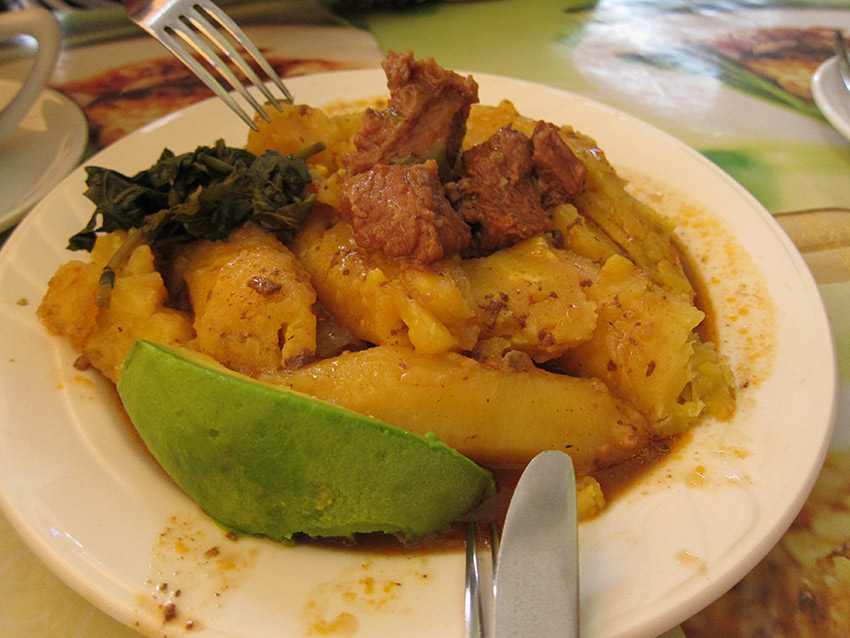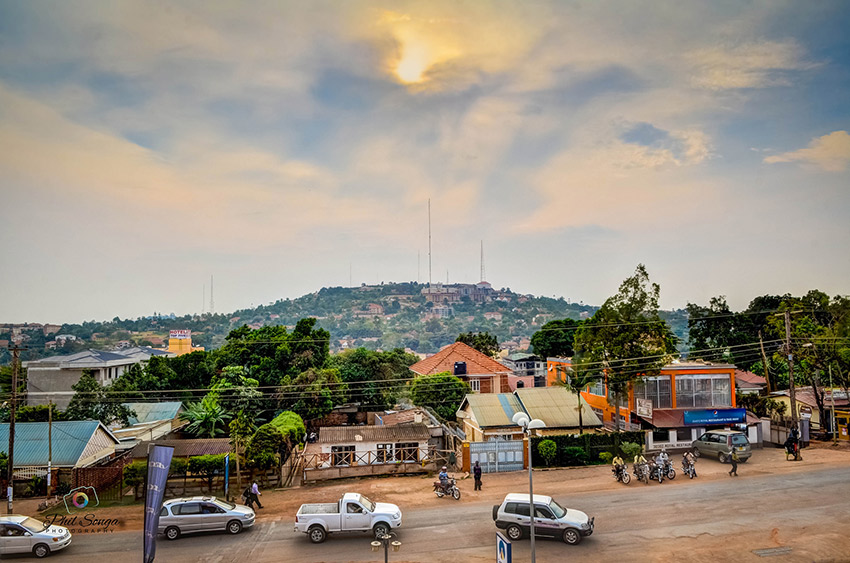There are few ways travellers to Uganda come to know Kampala. There’s the route that has a traveller stop by on the way to see the mountain gorillas or Lake Victoria. Or there’s the type of visit that asks the traveller to stay for a month, and then a few more, leaving them hopelessly enamoured with the city. It’s rare to meet anyone who falls in between, either you know it well or typically not at all.
That’s because it’s not the kind of city you may not expect to fall in love with. On the surface, Kampala is chaotic, dirty, confusing. You’ll probably spend an hour in traffic before you make it from the airport to the city. When you finally get there the, first impressions may seem dull and grey. Maybe that’s why many don’t stay. But that’s also the reason it’s so special — because only a few give it a chance. Once you take the time to look beneath the surface, to really become friends with Kampala, you’ll find a city that’s truly alive, full of love and smiles and soul and laughter. And you, like myself, may find it very hard to leave.
Food
Like a lot of food in Africa, Ugandan cuisine is simple but delicious! While African staples such as beans, rice and stew are widespread, there are many traditional Ugandan delights to try. The “Rolex” choice is a rolled up chapati filled with eggs, tomatoes and vegetables, and is perfect for any time of day. Matoke, eaten with most meals, is made by steaming and mashing bananas; it’s a local favourite and is super filling. If you get a brownish sauce served with your meal, it’s most likely the popular ground nut sauce, which is delicious with absolutely everything. Lastly, the katogo is a powerhouse breakfast made by stewing beef, beans or vegetables and serving them over matoke or bananas; truly a breakfast of champions. All of these classics can be found at local eateries throughout the city.

Matoke is made by steaming and mashing bananas.
Interestingly, Kampala also has a large selection of quality, international food, such as Mexican and Chinese. There are French bakeries, Italian gelato, plus a countless collection of Western coffee shops and cafés that hope to serve all of your comforts from home. You’ll find these at such malls as Acacia and Oasis (Endiro Coffee gets my vote!). You’ll even find health food stores that sell almond milk and gluten-free pasta. You certainly won’t go hungry here.

Katogo is a powerhouse breakfast. Photo courtesy Fabulous Fabs.
People
You may hear this about many places, but Uganda really might have the friendliest people in the world. For a capital city, there is a comforting humility about Kampala and its people, one that makes it easy to like. It may catch you off guard at first, but it won’t be uncommon for people to stop you in the street and simply ask you how you are and what you’re doing in town. A simple “What’s the time?” can often turn into a conversation full of laughs and handshakes. Kampala may have not have an Eiffel Tower or a Times Square, but the people alone make it a worthy place to visit.
Language
Luganda is the main spoken language in Kampala, although it is not an official language due to the many different tribes in the country, some of whom do not wish to speak or learn Luganda. As a result, English is the official language and is widely spoken, and I did not meet a single person in Kampala not conversational in English. Of course it is helpful and respectful to learn a little Luganda, but as an English speaker, you will have very little trouble communicating in Kampala.

Kampala's official language is English but you'll often hear Luganda being spoken.
Getting around
Getting around Kampala is easy (sort of). Most people use motorbike taxis, known as bodas. They are not the safest mode of transport and boda accidents are common, but the convenience is unmatched (they’re everywhere!). They are also the cheapest method, costing around 2,000 – 5,000 UGX per ride (about USD $0.50 – $1.50). Most tourists eventually feel comfortable using them in the less busy areas, such as Kololo and Munyonyo. Minibuses, which the locals refer to as taxis, run throughout the city, although can be confusing experience for tourists to work out. Feel free to ask a local to help you find the right one — they’ll be more than happy to help! Lastly, cabs are available and are reasonably common but more expensive. Expect to pay between 20,000 – 50,000 UGX (USD $5.00 - $15.00) for a five- to 15-minute ride, depending on where you’re going.

Most people use motorbike taxis, known as bodas. Photo courtesy Lauren P.
What to do
The culture in Kampala is vibrant and varied. There is a big dance scene, particularly Latin dance, with salsa, kizomba and bachata nights (and free lessons) spread throughout the city almost every night of the week. Don’t be shy — go and check it out! Zumba and yoga are growing in popularity and are not hard to find. I attended the annual Bayimba Arts Festival, which is centred around live music, crafts and dance, but the highlight was the stand-up comedy on offer, where some grassroots talent had the packed theatre roaring with laughs. As I’d learn, stand-up has taken the city by storm, and for good reason.
For relaxation, the beaches in Entebbe and Munyonyo are a short drive away, and the spas are top quality and very affordable (I had some restoring afternoons at Acacia’s Soothing Spot Spa). Like much of East Africa, appreciation of art is often rooted in culture, so it’s not hard to find dance shows or live music on any day of the week. It’s a tight community, so if you’re looking for something in particular just ask.
Safety
It is difficult to comment on safety as a foreigner, but as a visitor to the city I never felt unsafe. Security is stringent at most malls, banks and bars, with armed guards stationed outside, mandatory bag checking and metal detectors at most entrances. While this may be indicative of past safety problems, most locals tend to walk comfortably in the main areas now. I spent a lot of time walking alone, both day and night, but taking a cab is recommended if you’re alone or unfamiliar with the area.
Nightlife
Nightlife is big in Kampala. The Kololo area has a lot of great bars and lounges, a few being particularly popular with expats and tourists. Ugandans often enjoy nights out to relax, have a few drinks and catch up with friends. You’ll see groups of people sitting around a table enjoying food and drink, and smoking the ever popular shisha until the early hours. Nightlife is not intimidating here, and it is easy to make friends and have a good time. The city centre has some more boisterous clubs if that’s what you’re into, as does the Kabalagala area. There are a few nice places to check out in Ntinda and Bukoto areas, too. Once you’ve made a few local friends (which won’t be hard!) they’ll be more than happy to show you around.

The view from the Ntinda area. Photo courtesy Phil S.
Get involved
Kampala is not the prettiest city by any means, but it doesn’t need to be. The beauty of Kampala lies in its people — their smiles, their pride and their hospitality. The trick to understanding Kampala therefore lies in getting involved; striking up conversations, going to events and hearing the stories of the people who call the city home. If you make the effort to reach out, Kampala will certainly welcome you with open arms. Just make an effort to say, “Hi.” The rest will fall into place.

Kampala will certainly welcome you with open arms. Photo courtesy Rory M.
Getting There
G Adventures runs a number of departures in Uganda encompassing a wide range of departure dates and activities to cater to different tastes. We’re thrilled at the prospect of showing you this big blue planet of ours — check out our small group trips here.























